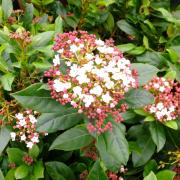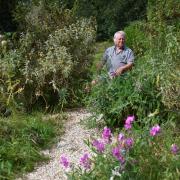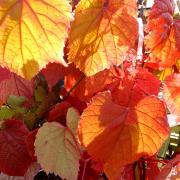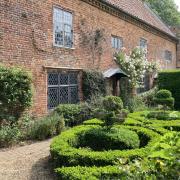Plant specialist Keith Clouting of Taverham Nursery shares his seasonal gardening advice
FRAGRANT FLOWERS
The garden in June is a delightful place to be with flowers bursting forth from every corner, the hum of bees as they move from flower to flower, and the fragrance of jasmine, lavender and roses filling the air. One of the best fragrant climbers is also flowering now, Trachelospermum, commonly known as Star Jasmine, are fabulous woody evergreen climbers which add a lush aromatic display to any garden. The award winning Trachelospermum jasminoides is the classic Star Jasmine species which in summer produces abundant clusters of sweetly fragrant star shaped white flowers which are used in perfume manufacture. Later in the year as the weather cools in autumn and winter its evergreen leaves take on bronzy-red hues to give it interest throughout the seasons.
A more recently released variety of T. jasminoides is Star of Toscane which has a similar growth habit to the species but with small clusters of highly scented buttery-creamy yellow flowers throughout the summer. If pink is your colour the one for you is T. asiaticum Pink Showers which has the same evergreen leaves complemented in summer by its pale pink flowers which again are highly fragrant. Like the other Trachelospermum it’s a versatile plant for covering walls fences and pergolas, thriving in sun or part shade, in most types of well-drained soil including chalk and sand. Trachelospermum are vigorous plants easy to grow plants when established, they flower on new growth so any pruning should be done in very early spring before the new shoots start to grow.

PLANT OF THE MONTH
Chionanthus virginicus (Fringe tree)
This North American native can be grown as a large deciduous shrub or small tree. In early summer it bursts into life with clouds of drooping, lightly fragrant, lacy white flowers which give it a stunning effect when in full bloom. It grows and flowers best in full sun preferring moist humus rich acidic soil. It’s relatively trouble free, and requires little pruning other than removing damaged or crossing branches. C.virginicus is a fairly slow growing tree reaching around 4m when mature.

QUESTION FOR KEITH
I would like to grow some herbs but only have an area with quite a lot of shade, which herbs would thrive there?
Although many herbs enjoy sunny positions, growing herbs in a shady position can still be rewarding, not all of them require a hot sunny site. Herbs which grow well in lower light levels include parsley, coriander, and mint which is best contained unless you have plenty of space. Chives are also quite happy and easy to grow from seed and have delicate purple wildlife friendly flowers. When planting add some grit, sand or composted bark this will assist drainage to help plants in through the wet of winter and ensure future crops of aromatic herbs.
Catch up with Keith
Keep any newly planted subjects well-watered in dry weather to give them a good start and prevent failures.
Deadhead and keep any tubs and baskets well fed and watered to keep them flowering and growing well throughout the summer.
After the first truss of tomatoes has set, feed the plants regularly with a high potash fertilizer to ensure a heavy crop.
Deadhead lupins as soon as the first flowers start to set seed. This will encourage more flowers from lower down the plant.
Hoe borders to help keep weeds down, mulching around plants will help reduce the need for this and will also help retain moisture.
Keep a regular eye out for pests and diseases catching and treating them early will help prevent large infestations becoming a problem.



























